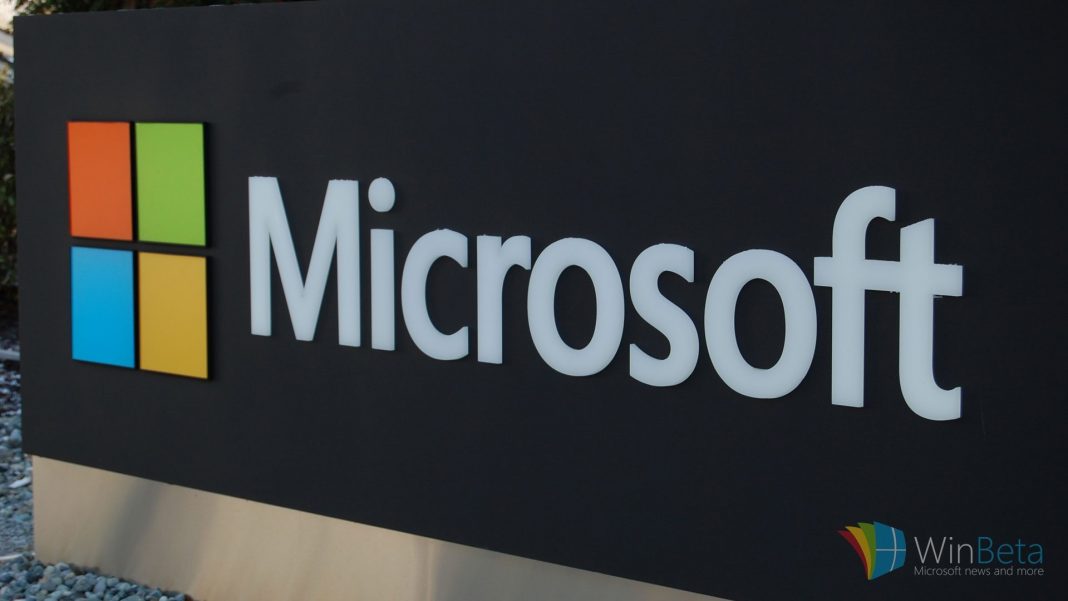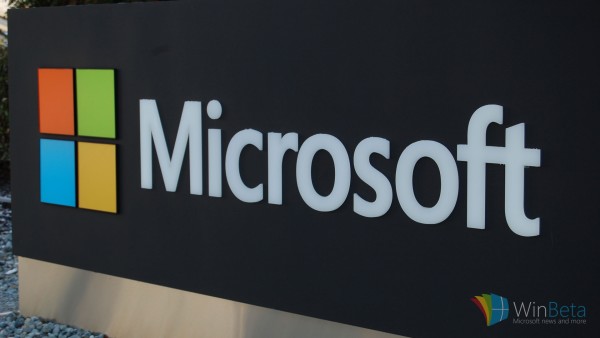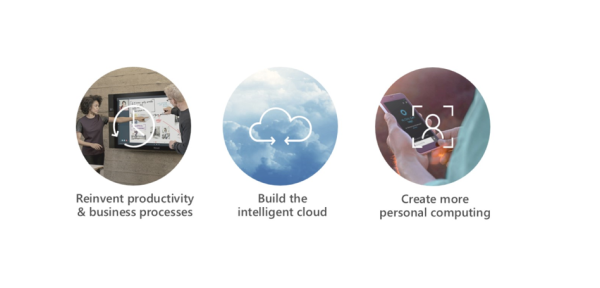
 Just a few months after Google split itself into several components under Alphabet Holdings, Microsoft did the same. The success of its hardware gamble may have played a large factor in the split or this has been in the works since Satya Nadella took the reins. Microsoft split itself into three segments which include Intelligent Cloud for Windows Server licensing, Azure cloud platform and enterprise services; Productivity and Business Processes for Office and Dynamics CRM; and More Personal Computing, which will handle Windows, Bing and its newly successful hardware business. The purpose is for improved financial reporting to Wall Street and to reorganize the company to focus on what each segment does best.
Just a few months after Google split itself into several components under Alphabet Holdings, Microsoft did the same. The success of its hardware gamble may have played a large factor in the split or this has been in the works since Satya Nadella took the reins. Microsoft split itself into three segments which include Intelligent Cloud for Windows Server licensing, Azure cloud platform and enterprise services; Productivity and Business Processes for Office and Dynamics CRM; and More Personal Computing, which will handle Windows, Bing and its newly successful hardware business. The purpose is for improved financial reporting to Wall Street and to reorganize the company to focus on what each segment does best.
Microsoft has always been in the software business which is why the More Personal Computing hardware segment sparked much interest. This means that Microsoft is fully into the hardware business aside from the Xbox and Microsoft Intellipoint. The company may have missed its calling as it was partly responsible for transforming the Apple II into a fully competitive business computer via the Z-80 SoftCard add-on. The SoftCard was a logic board that enabled the Apple II to run CP/M and popular CP/M business programs. The Microsoft Mouse along with the Microsoft Natural Keyboard has long been regarded as the best computer peripherals, and the Xbox and Kinect have cemented themselves in the console gaming landscape. These successes, however, matter little in the modern setting.

Sitting on a large sum of money and its enterprise cash cows, Microsoft could afford to gamble and cut its losses. Its release of Windows 8, like some fun and entertaining movies, received mixed to negative reviews. But that’s because they rolled out something literally colorful and different and people’s change receptors are often set to kill. People didn’t know what to make of Windows 8 on non-touch systems sold by OEMs. To make sure that people can accept Windows 8 for what it is, a tablet and desktop operating system, Microsoft produced its own hardware and came up with the Surface line of tablets, the Surface RT (for Windows 8 RT) and Surface Pro. Tablets that are PCs at the same time meant for people who want to be more productive but want the portability of tablets. As a me-too product, the Surface seemed like just another tablet to compete with Apple and everyone else. But the Surface tablets are partnered with colorful, innovative touch keyboard covers, stylus and a kickstand not seen in other tablets which converts the Surface into a fully functioning laptop completely adept for office work. These tablets also antagonized Microsoft’s OEMs as the company sought to compete in the PC industry. Though not well received at first, Microsoft had to suffer the biggest write-offs in its history for the failure of the Surface RT and the Nokia acquisition. But the company pressed on with its vision that instead of branching to another operating system like iOS or Android, Windows will work for tablets.
Just like Windows 3.0, Windows 8 became more acceptable when updated to 8.1. The Surface line improved as well. The Surface Pro 3 had a larger screen, improved kickstand, improved touch keyboard, was thinner and lighter and had improved specs, became a hit. Add Windows 10 into the mix and Surface devices became the perfect mix of hardware and software as MacOS was for Macbooks. Speaking of Apple, the structure of Microsoft’s More Personal Computing is almost the same as Apple that seamlessly integrates hardware and software and also curiously premium, covetable pricing.
“…Of course, we’re competing with Apple…Making premium devices and reinventing categories that essentially puts us in a camp to fundamentally compete with Apple devices…”
–Panos Panay, Microsoft Head of Engineering
The Surface Pro 3 and later the new Surface Pro 4 and Surface Book fit well into Microsoft’s vision for Windows 8 and Windows 10, something OEMs earlier failed to achieve. What was the hallmark of the Surface’s success? The resurgence of clones in the new hybrid industry, and devices that copied some of the Surface’s design aesthetics. Dell, HP, Lenovo and other manufacturers took design hints and jumped into the Surface bandwagon. Even Apple somewhat followed suit with the iPad Pro. Is Microsoft mad? No. Everything happened according to plan. Microsoft taught the industry how to treat and handle Windows. Rolling out Windows and Office in a revitalized PC industry was more important, and its hardware success was an added bonus. Also, the Surface Pro 3 created anticipation for what Microsoft had next in its sleeve. An anticipation almost at par every time Apple announces the coming of a new product. That anticipation gave us the Surface Pro 4 and the surprise introduction of their first laptop, the Surface Book in their last conference this October. Microsoft is also building anticipation with its Windows Holographic or Hololens platform as well as the continuum functions of its new Lumia 950 phones. The Surface Book now enjoys plenty of pre-orders.
Microsoft’s newfound success in hardware leads it to create the More Personal Computing segment to better focus on the hardware aspect of things. However, this creation of a new hardware company makes it a more direct competitor to its OEM partners than it already was. Microsoft is happy with the flattery it’s getting from being copied, but the OEMs are not as ecstatic. No retailer or manufacturer is ever happy when a new player enters the picture especially if that new player is someone that’s supposed to keep them afloat. That new player even strikes a deal to have them sell its devices through their distribution channels. Some agree, but after creating a device one gene short of a total clone (Miix 700), Lenovo took a stand and said no. It even launched its own tabletop Yoga 900 to compete with the new Surface Book and Apple’s iPad Pro. Shortly after the Surface Book introduction, manufacturers also came out with their own spins on the Surface Pro and Surface Book yet stated that they’re not happy.
Many PC users say that PC manufacturers are also to blame by not coming out with more innovative products sooner, slapping on Windows versions on mediocre devices that don’t play well with the OS. It’s more of the same every year, double the memory, double the disk space, a different processor and a dose of bloatware. This led Microsoft (for its own survival) to become more personal with them, to step in and teach them how it’s done. Microsoft succeeded in giving users a product that they really wanted. Windows PCs with real portability that also bridges the gap between consumerism and productivity. Also, Microsoft, playing second fiddle to Apple for some time now has taken advantage of Apple’s current slump on inventiveness and aims to regain first place in the tech industry, competing with Apple directly, making it more personal with them. And users like yours truly now want to have a taste of what it’s like to actually own a Surface Pro 4 or a Surface Book. While I love working on my aging Asus Vivobook with a not so friendly Windows 10, I’d like a more personal experience with a Surface Pro 3 or 4 as the holiday season draws near.

